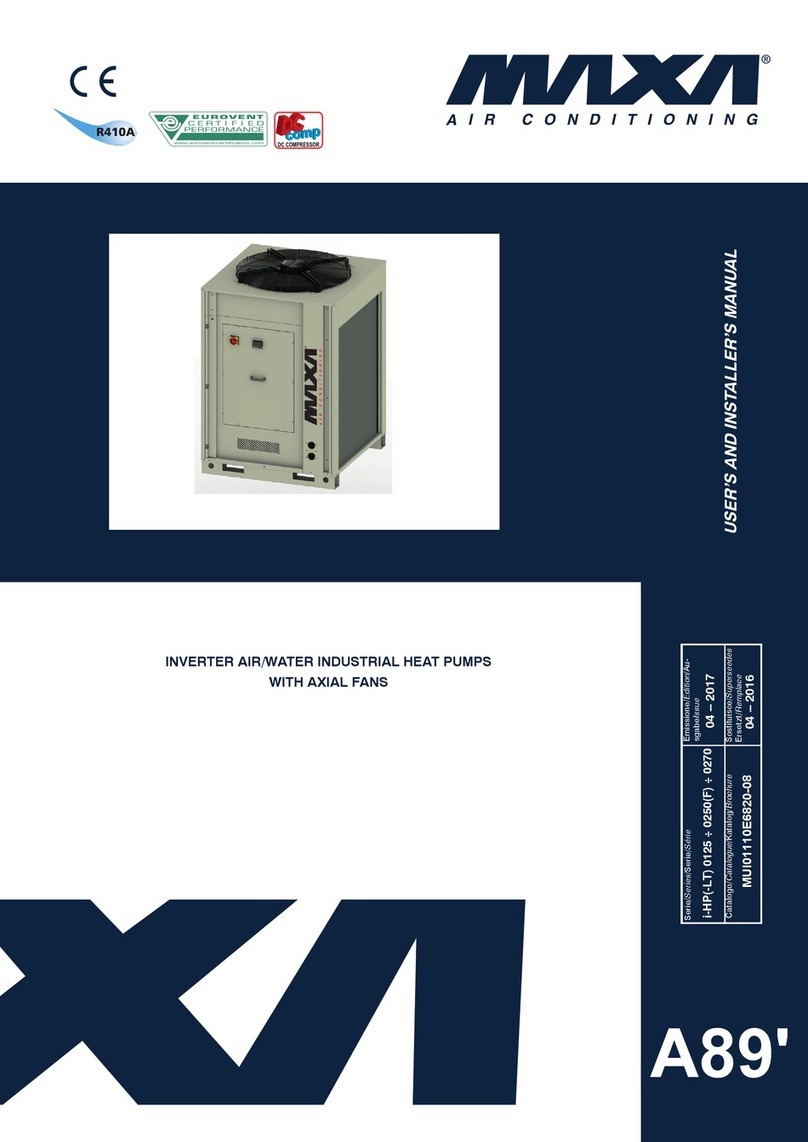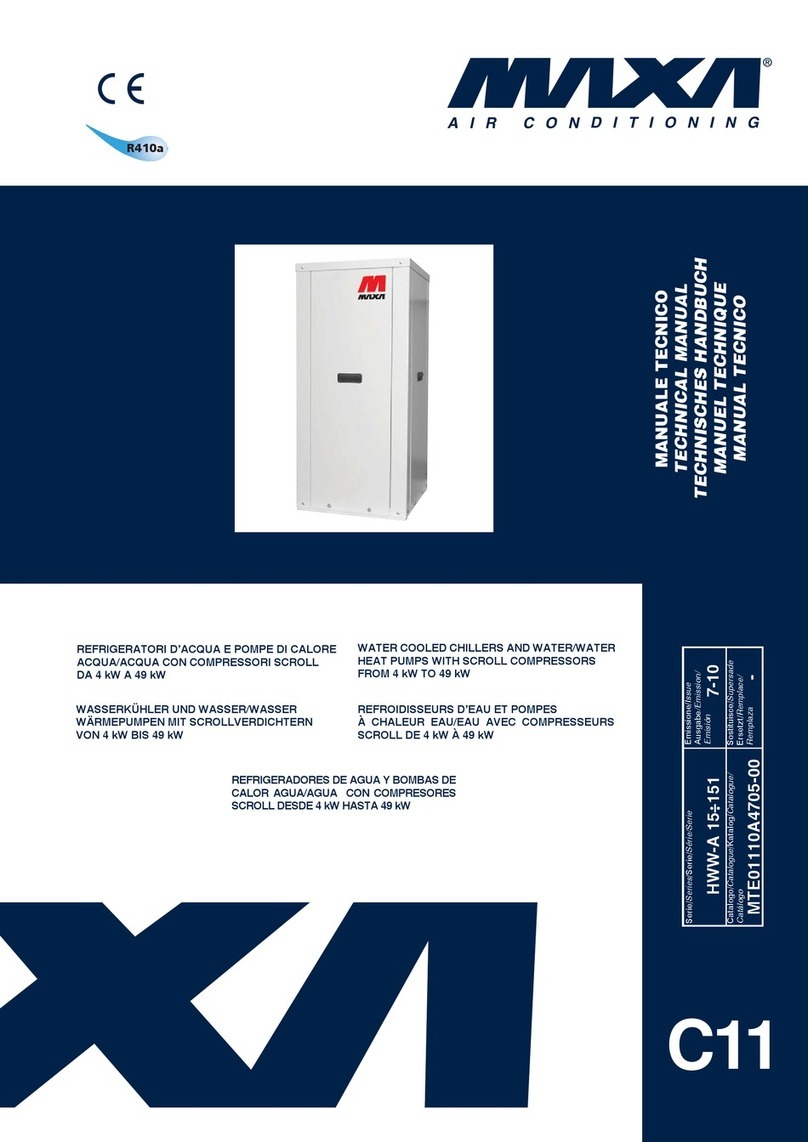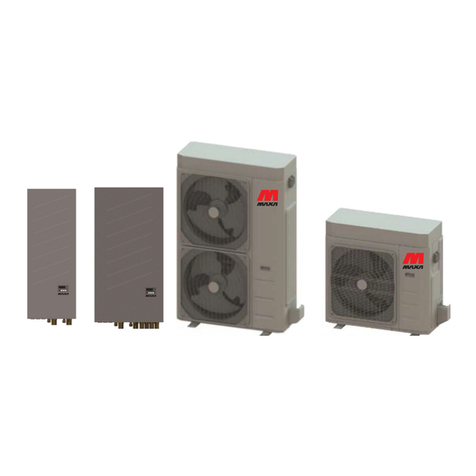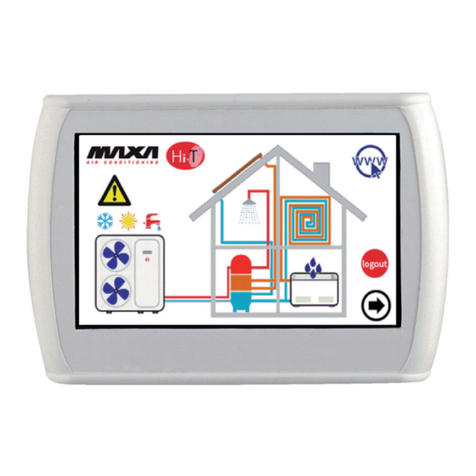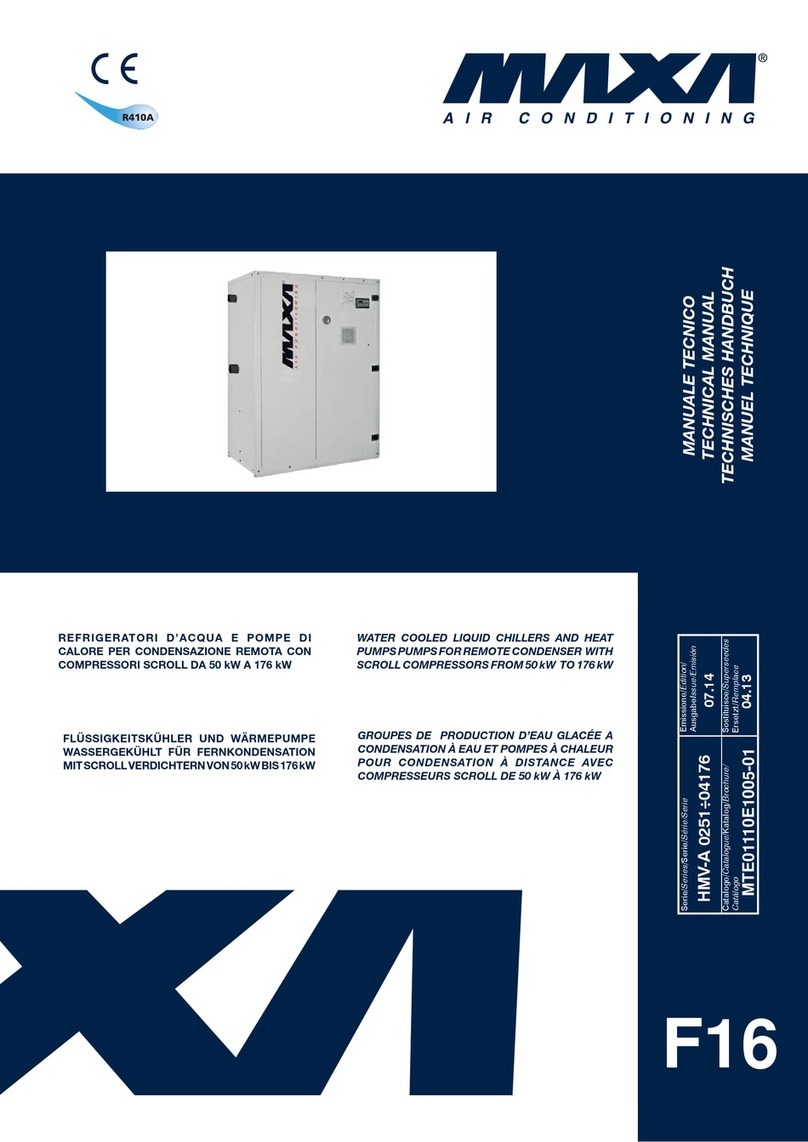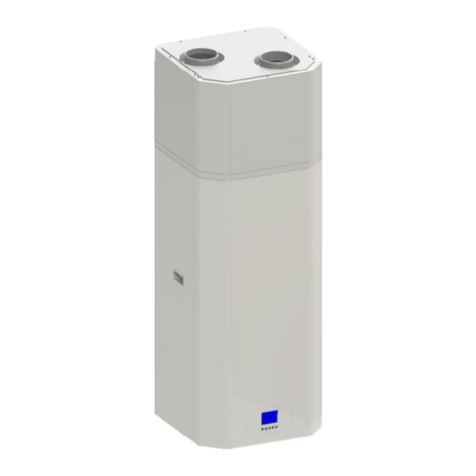
CALIDO Sanitary water heat pump
INDEX
1PURPOSES AND CONTENTS OF THIS MANUAL........................................................................................................................ 6
1.1HOW TO KEEP THIS MANUAL ................................................................................................................................................. 6
1.2 GRAPHIC SYMBOLS USED IN THE MANUAL ............................................................................................................................ 6
2SAFETY LAWS ......................................................................................................................................................................... 6
3PERMITTED USE ..................................................................................................................................................................... 6
4GENERAL SAFETY GUIDELINES................................................................................................................................................ 7
4.1 WORKERS’ HEALTH AND SAFETY ............................................................................................................................................ 7
4.2 PERSONAL SAFETY EQUIPMENTS ........................................................................................................................................... 7
4.3 SAFETY SYMBOLS ................................................................................................................................................................... 7
4.4 REFRIGERANT SAFETY DATA SHEET........................................................................................................................................ 8
5GENERAL CHARACTERISTICS................................................................................................................................................... 9
5.1 FLEXIBILITY AND BENEFITS OF CALIDO1 INSTALLATION ......................................................................................................... 9
5.2 COMPACT DESIGN.................................................................................................................................................................. 9
5.3 AVAILABLE MODELS ............................................................................................................................................................... 9
5.4 AVAILABLE OPTIONALS ........................................................................................................................................................ 10
6TECHNICAL FEATURES .......................................................................................................................................................... 10
7ITEMS INSIDE PRODUCT BOX ............................................................................................................................................... 10
8OVERVIEW OF THE UNIT ...................................................................................................................................................... 11
8.1 PARTS AND DESCRIPTIONS................................................................................................................................................... 11
8.2 DIMENSIONS ........................................................................................................................................................................ 11
8.3 HOLES FOR CABLES............................................................................................................................................................... 13
8.4 HOW TO REPLACE THE MAGNESIUM ANODE....................................................................................................................... 13
8.5 REGULATION THERMOSTAT OF THE ELECTRIC HEATER........................................................................................................ 14
8.6 SCHEMATIC OVERVIEW OF THEWATER AND GAS CIRCUIT .................................................................................................. 14
8.7 SCHEMATIC OVERVIEW OF THE GAS CIRCUIT....................................................................................................................... 14
9INSTALLATION...................................................................................................................................................................... 15
9.1 GENERALITY ......................................................................................................................................................................... 15
9.2 SAFETY INSTRUCTIONS......................................................................................................................................................... 15
9.2.1 Warning........................................................................................................................................................................ 15
9.2.2 Caution ......................................................................................................................................................................... 15
9.3 HANDLING OF THE UNIT....................................................................................................................................................... 16
9.3.1 Handling of the unit with forklift.................................................................................................................................. 16
9.3.2 Manual handling of the unit......................................................................................................................................... 16
9.4 REQUIRED SERVICE SPACE.................................................................................................................................................... 17
9.5 INSTALLATION OVERVIEW.................................................................................................................................................... 17
9.6 HYDRAULIC CONNECTIONS .................................................................................................................................................. 18
9.6.1 Water connections ....................................................................................................................................................... 19
9.6.2 Water loading............................................................................................................................................................... 19
9.6.3 Discharge of water from the tank ................................................................................................................................ 19
9.6.4 Installation of an external re-circulation pump and flow switch.................................................................................. 19
9.6.5 Connection of an auxiliary heat source ........................................................................................................................ 20
9.7 ELECTRICAL CONNECTIONS.................................................................................................................................................. 21
10 START UP ............................................................................................................................................................................. 22
11 OPERATION THE UNIT .......................................................................................................................................................... 22
11.1 USER INTERFACE .................................................................................................................................................................. 22
11.2 OPERATIONS ........................................................................................................................................................................ 22
11.3 LCD ICONS .............................................................................................................................................................................. 24
11.4 MAIN LOGICS........................................................................................................................................................................ 25
11.4.1 Water temperature difference for compressor starting............................................................................................... 25
11.4.2 External pump .............................................................................................................................................................. 25


















